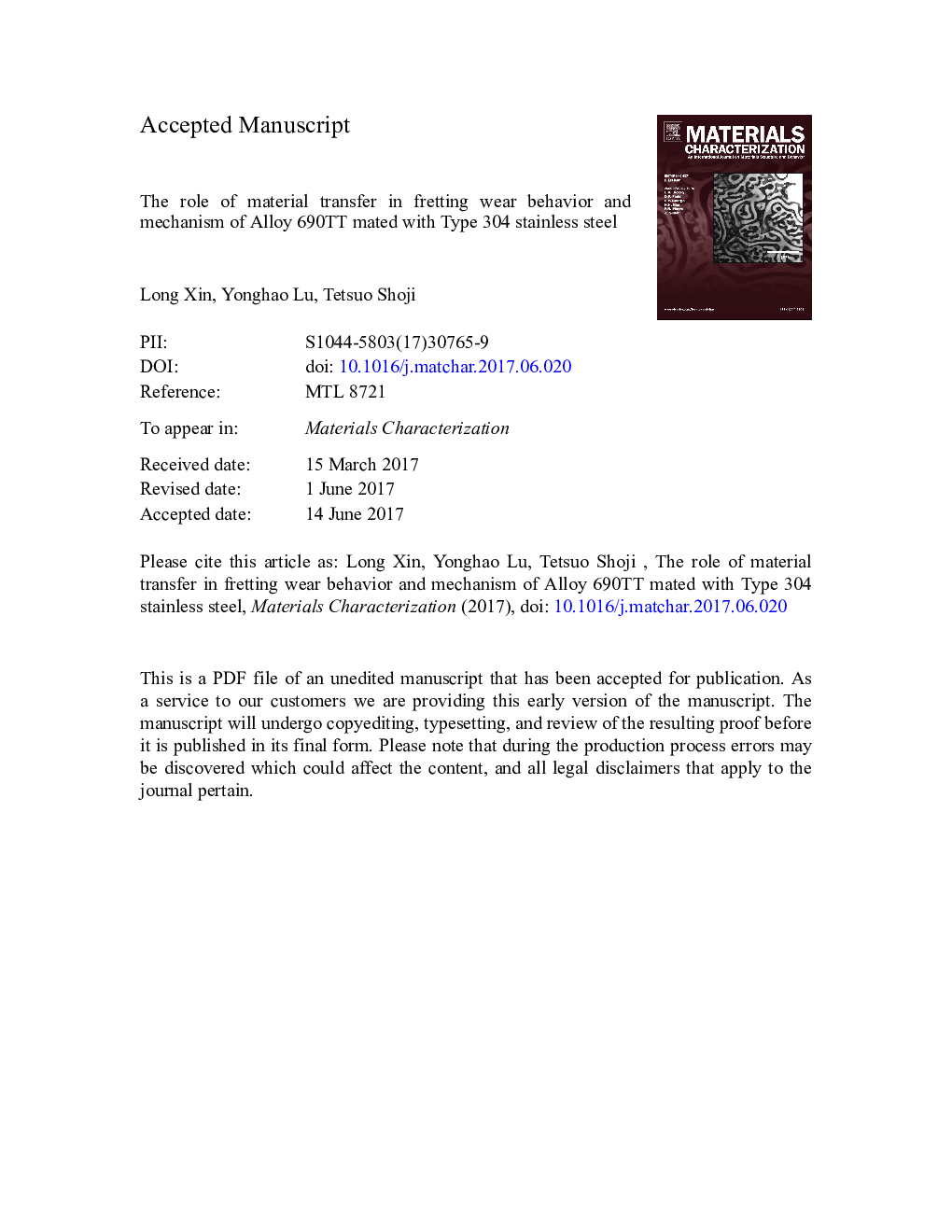| Article ID | Journal | Published Year | Pages | File Type |
|---|---|---|---|---|
| 5454713 | Materials Characterization | 2017 | 42 Pages |
Abstract
This study aimed to investigate the role of material transfer in fretting wear behavior and mechanism of Alloy 690TT mated with Type 304 stainless steel (SS). Results indicated that the unidirectional material transfer from 304SS to Alloy 690TT occurred in gross slip regime and partial slip regime. Reciprocal material transfer of friction pair occurred in mixed fretting regime. A new type of nanostructured tribologically transformed structure (Type-1 TTS) was found between the third body layer (TBL) and the conventional Type-2 TTS layer. And Type-1 TTS with an average grain size of 52Â nm was attributed to material transfer and subsequently mechanical alloying. The Type-2 TTS layer with an average grain size of 35Â nm formed as a consequence of dynamic recrystallization. The mechanical effect and oxidation on Type-1 TTS resulted in the ultra-fine grained TBL which mainly contained oxides of spinel and Fe2O3 with an average grain size of 7.5Â nm.
Related Topics
Physical Sciences and Engineering
Materials Science
Materials Science (General)
Authors
Long Xin, Yonghao Lu, Tetsuo Shoji,
